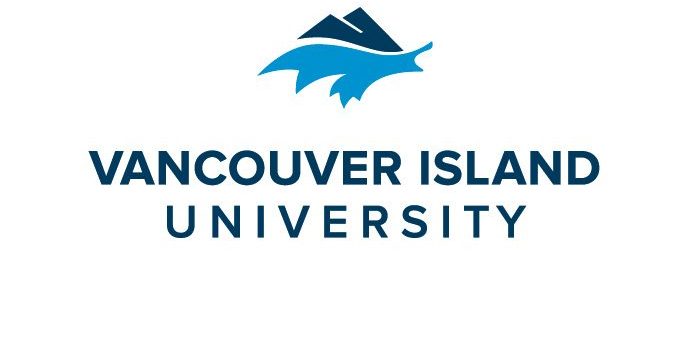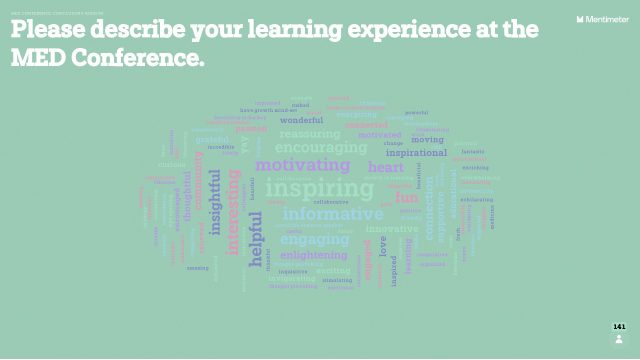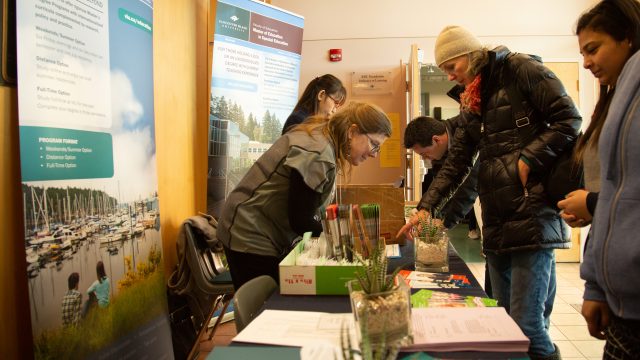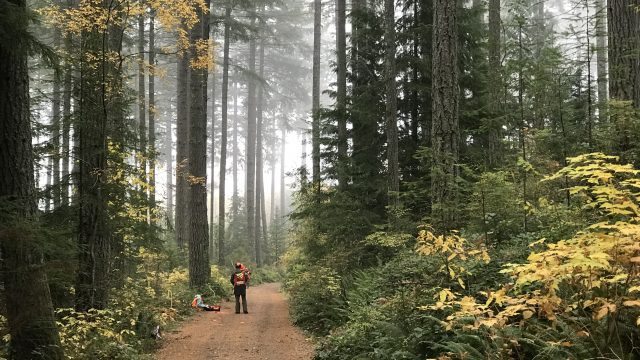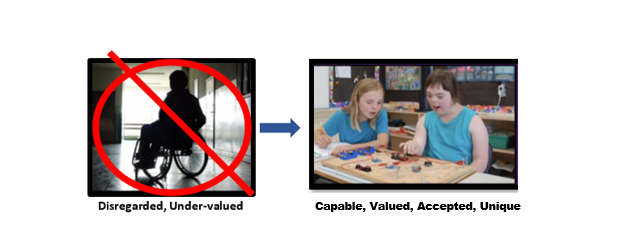Thanks everyone for a great day! For a summary of our learning, check out the wordcloud from Mentimeter.com. We also shared surprises, gifts and challenges using Padlet.com.
Synchronous Conference Day!
We are all systems go for synchronous events on Saturday March 6th. You have received a personalized schedule with your sessions and zoom links. The keynote starts at 9 am!
Some program meet up breakout rooms have been added to the Conversations with Asynchronous Presenters Session. Arrange to meet your colleagues there.
Share your learning and thoughts throughout the day on Twitter using #medVIU2021
In case of technical difficulties contact your session moderator or learnsupport@viu.ca.
Looking forward to seeing and hearing your presentations, conversations and questions. Have a great day!
How to improve student success in the transition to high school.
Think back to your first day of high school. Can you remember how you felt? Were you nervous? Scared? Excited? Did you feel overwhelmed and out of your element? Did you feel like you fit in? Did you feel like you would be successful?
The transition from high school to elementary school is a challenging one. This can be even more challenging for students coming to school from small, remote elementary schools. Additionally, some students may face further changes when then arrive at a School District run high school from a band run First Nations elementary school. At least, this was my perception was well as that of my teaching colleagues. I chose to investigate the reality of people who have experienced such a transition with the intention of learning how high schools can set their incoming students up for success.
While I initially intended this to be a thesis study, I am in the midst of converting it to become a project. Life presented me with an opportunity to begin my career as a Vice Principal at a new school. While this has been a wonderful learning opportunity, and has brought to life many of the discussions from our educational leadership courses, it has been a challenge for my Masters thesis work. I have noticed the challenges that our grade 8 (the youngest grade at our high school) group present. Efforts that go beyond the traditional grade 7 high school visits are required to help smooth out the social, emotional and academic transitions that this transition requires. With new flexibility in our scheduling for next year thanks to COVID-19, I am in the process of helping to design a new schedule that provides greater wrap around support for our newest students. The aim is to help them be successful in their new environment. We want out students to be:
- Self-advocating
- Supported
- Belonging
- Loved
- Valued
- Understood
- Connected
- Growing (not just physically)
- Respected
- Comfortable
- Confident
To achieve this, our school will have a dedicated group of educators working with our grade 8 cohort. They will take part in psychoeducational activities for staff helping to understand what social/emotional needs teenagers have when they are in new and stressful environments. Teachers for the grade 8 cohort will set out clear and consistent expectations that exist across all classes. There will be opportunities for staff to get to know the incoming students on a personal level. Events will be organized around activities and interests based outside the traditional school system. Staff will have facilitated conversations with new students to achieve personal connection, and develop a plan of what each student needs to be successful.
Dancing Between Traditions: A Critical Examination of Learning Systems Through the Metaphor of Athabaskan Fiddle Music
By: Ryan West
In many ways, our education systems are failing to meet the needs of our Indigenous learners. There is a growing urgency to meet students where they are at, but not just academically. Programming needs to begin acknowledging and creating space for the diverse set of individuals, cultures, and learning systems present in schools today. This narrative study suggests that the story of Athabaskan fiddle music and the learning experiences of local fiddler players can help the greater educational community understand the benefits of bringing formal education outside the realms of standardization and compartmentalized learning by creating space and honouring Indigenous learning systems within our classrooms.
What are the management priorities and academic opportunities for Woodlot 0020?
What are the management priorities and academic opportunities for Woodlot 0020 identified by Stakeholders, Educational Leaders, and the Public? Public survey research will help guide the next update to the Woodlot Management Plan and help to identify educational opportunities for greater utilization of this amazing resource right in our back yard.
Team Teaching for Professional Development
by: Ryan Gray
I have always been interested in the idea of team-teaching. Since the provincial government decided that the majority of educators in the province will work under a cohort model where they are primarily grouped with one other educator, why not have a look at some impacts that decision is having on educators? Have educators used their fellow cohort partner as a team teacher? Has this set up mandated by the provincial government had any impact on the professional learning of educators?
Teaching is inherently social in nature. Despite this, it has been referred to as a socially isolating profession (Hindin, Morocco, Mott & Aguilar, 2007). We spend hours with our students but we do not spend enough time reflecting, discussing and evaluating our practices with each other. Research has shown that teachers who work individually without a partner or critical friend will likely not undertake any significant change to their teaching practice (Dufour, et al, 2004). Traditionally, professional development has been dependent on input from outside experts in the form of presentations or one day seminars. Short term professional development programs are often not enough to change practice as teaching learning and development are a long-term practice (Rytivaara & Kershner, 2012).
The purpose of my research is to determine the impact of a strong relationship with their cohort or team-teaching partner on individual teaching practice. I will be collecting quantitative data to determine if teachers have a strong relationship with their cohort partner, that the relationship fosters professional development, and increases attachment to their schools.
The goal of my research is to determine if a cohort teaching model impacts individual teaching practice and connection to their school. The specific questions guiding my research are as follows:
- What are the attitudes of teachers who teach in a cohort model regarding professional learning and development?
- What are the factors that determine a strong professional relationship between teaching partners?
- What impact does cohort teaching have on teachers feeling connected to their school in a positive way?
I am still in the pre-research portion of my thesis, therefore questions about collecting data, writing a survey and interpreting data might be out of my expertise. I would invite questions about other aspects of writing a thesis: coming up with an idea, prioritizing time, difficulties and successes along the way!
3 Min Thesis – People’s Choice Award
If you’ve watched all the 3 Min Thesis videos, please click this link below to vote for People’s Choice! Votes will be accepted until 5 pm on Friday March 5th. Awards will be announced at the Concluding Session.
An Exploration of Maker Spaces in Vancouver Island Public Schools
by: Kelsey Lawson
“Maker” is an umbrella term for people who have been known as hobbyists, tinkerers, hackers, builders, crafters, artists, and innumerable other terms.
“Maker spaces” are those places where people come together to create all types of things – physical items and virtual products. Initially found in places such as community-based spaces with nominal paid memberships or in libraries or children’s museums, maker spaces have more recently begun to be implemented in schools across the world.
As Maker Spaces are a relatively recent phenomenon in education, I am exploring how such spaces are being implemented in a BC-specific context to support constructionist learning for students, particularly those at the upper-elementary and middle school grade levels before classes typically transition to subject-specific content such as woodwork, metalwork, or robotics.
I wanted to know things such as how maker space teachers chose the technologies they included in their spaces, how they funded and obtained supplies for the space and courses, what support they had from various levels of their school community, how such learning differs from or complements learning in an academic classroom, changes teachers had noticed in their own teaching methods and in their students’ learning or engagement, and any recommendations maker space teachers had for others who were in the beginning stages of implementation. I decided to perform a comparative review of dedicated school-based maker spaces to document the various ways that maker spaces have been implemented and used to support student learning. Following the completion of my comparative review, I intended to use this information to create a guiding resource for BC teachers wishing to incorporate maker space concepts within their classrooms and schools.
Initially, I thought I’d contact teachers in maker space classrooms across BC and visit sites that were within driving distance, so as to have as much information as possible from which to identify themes and draw conclusions. Following guidance from my instructors that any type of school across the whole of BC was too broad a study, I decided to narrow it to public school districts on Vancouver Island, then further to Central and North Vancouver Island. I planned to schedule on-site visits to maker space classrooms to interview teachers in person as well as to observe and document the physical spaces. Then COVID struck, throwing a wrench into everything I had so carefully planned and requiring that I redo a fair bit of the work I had already completed. Despite how it felt as though I should have SO MUCH TIME for thesis work, I found the opposite to be true.
So, ask me anything. I’m perfectly willing to talk about the roadblocks that pop up in the thesis process, working through your literature review, how inkshedding never actually takes 30 minutes. Hopefully my experience so far can be useful to you.
Student Self-Assessment + Reflection
Hey! I am Kelsey Shore, educator, adventurer and learner, sharing from the unceded traditional territory of the Sḵwx̱wú7mesh People.
Along with your completed work, please submit a written self-reflection.
That phrase might evoke emotion if you are a student, teacher or parent here in British Columbia.
Among the changes unveiled in the 2014 BC provincial curriculum overhaul, the inclusion of student self-assessment and reflection.
This shift toward focusing on self-assessment and reflection, while new to mainstream curricula, is not new to educational conversations.
So, what do teachers know and need to know about student self-assessment and reflection in inclusive classrooms?
How do you use student self-assessment and reflection in teaching and learning?
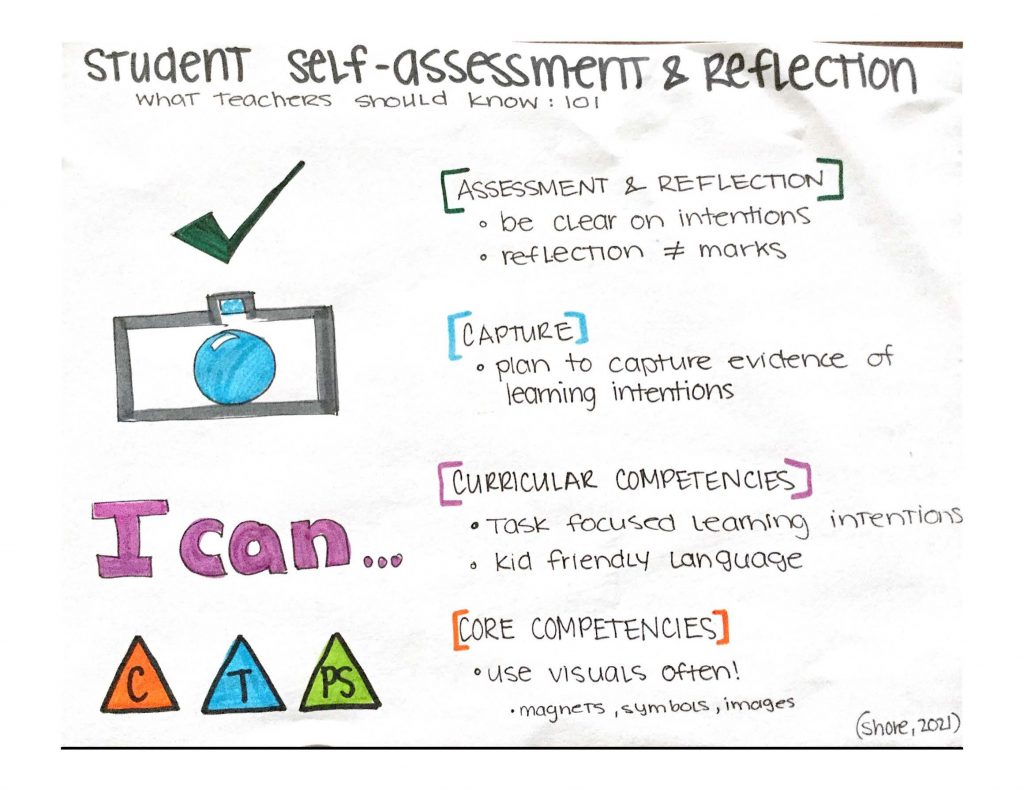
A Path To Inclusion: Disability Awareness Course for Educators
Are you a person who is interested in making K-12 schools more inclusive for people with disabilities? If so, check out the video below that outlines the highlights of my applied research project that I created for the part-time VIU Master of Education in Special Education program. My project is an online course for educators on the topics of disability awareness and inclusion.
As a person with a disability myself, I have a unique perspective of experiencing Special Education from both sides; both as both a student and as an educator. In this video I give you a short introduction to my life as a person with both cerebral palsy and epilepsy. I also outline what the research says regarding teachers’ concerns about inclusion, and what the experts state should be done to alleviate these concerns to create greater inclusivity in the classroom. As the video concludes, I provide an overview of the online course that I created for teachers and teaching assistants that is based on the research that I have conducted.
After watching this video, if you would like to view the course I have created, you can find the login information and a print overview of the course here. I would welcome any feedback you have on the course. Enjoy the movie!
~ Melissa Lyon
** Thank you to Dr. Bob Esliger for being an outstanding supervisor for my applied project!
